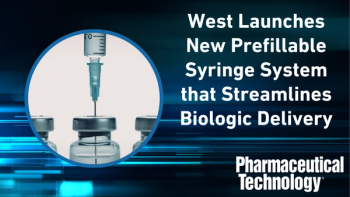
Electric Pulse Delivers Nanoparticles, Biomolecules
Baltimore, MD (Sept. 10)-Researchers at Johns Hopkins University have devised a new controlled-delivery system that applies an electrical pulse to release drug molecules, nanoparticles, biopolymers such as peptides and proteins, and protein assemblies such as viruses from thin fabricated gold electrodes. Developers hope the technique will allow biocompatible implantable chips for precisely dispensing small amounts of drug into the body.
Baltimore, MD (Sept. 10)-Researchers at Johns Hopkins University (JHU,
The researchers constructed long chains of hydrocarbon molecules. One end of the chain was anchored by a gold?sulfur bond to specially designed gold electrodes, each the width of a single human hair. The biomolecule to be released was attached to the other end. When a brief electrical pulse was sent through wires attached to each electrode, it broke the bond between the sulfur atoms and the gold platform, causing the tethered molecule to be released at a precise time.
The technology reportedly has several advantages over similar delivery techniques. “Because our molecules are attached to a surface, we can work with much smaller concentrations. We’ve also shown that our system is reusable. After a group of molecules is released, you can easily attach new molecules to an electrode and use it again,” says Searson.
Newsletter
Get the essential updates shaping the future of pharma manufacturing and compliance—subscribe today to Pharmaceutical Technology and never miss a breakthrough.




